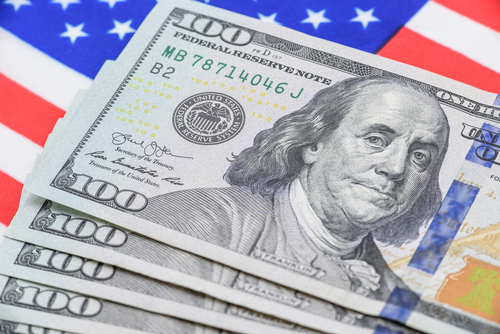
Monetary Policy & Inflation | US

Monetary Policy & Inflation | US
This article is only available to Macro Hive subscribers. Sign-up to receive world-class macro analysis with a daily curated newsletter, podcast, original content from award-winning researchers, cross market strategy, equity insights, trade ideas, crypto flow frameworks, academic paper summaries, explanation and analysis of market-moving events, community investor chat room, and more.
As expected, the Fed hiked 75bp to 2.25-2.50%. Chair Jerome Powell stressed the Fed remained focused on the inflation part of its mandate, since it could not meet the employment part sustainably ‘without restoring price stability’.
Powell’s forward guidance was much less specific than at previous meetings. This is possibly because data prints forced the Fed to break the very specific guidance for the June meeting given at the May meeting.
Powell indicated:
Statements 2 and 3 are somewhat inconsistent, reflecting the Fed’s lack of confidence that 2.5% is already at neutral.
With statement 5, Powell likely meant the unusually high uncertainty implied the Fed was unable to offer reliable forward guidance. Doing so would only compound the uncertainty.
For these reasons, incoming data prints will drive Fed hikes.
Powell strongly resisted the idea the US was in recession, mainly based on labor market strength. He highlighted that ‘the labor market remained extremely tight’, suggesting ‘aggregate demand remained solid’.
Powell explained the Fed would set its policy stance ‘at a level at which it would be confident that inflation was moving down to 2%’. Inflation returning to 2% would require a period of ‘below trend economic growth’ and ‘some softening of the labor market’. This suggests the Fed wants a marked growth slowdown: Q1 growth was 3.5% based on GDP and 4.6% based on GDI, against trend growth at 1.8% in the June SEP.
Powell further indicated ‘Labor demand was very strong, while labor supply remained subdued’, the latter due partly to an ongoing COVID wave. He added that the alignment between labor demand and supply had to get ‘better’. In this context, although he thought demand was moderating, the path to a soft landing had become ‘more challenging’.
Powell further listed what the Fed would be looking at in assessing the direction of inflation:

Powell thought quantitative tightening was working fine. It had started slow but would be at ‘full strength’ in September. (At the May meeting, the FOMC had indicated that reinvestment caps for Treasuries and MBS would be lifted in September to $60bn from $30bn for Treasuries and to $35bn from $17.5bn for MBS). Powell expected it to take about 2-2.5 years to slim the securities portfolio to its new equilibrium.
This contrasted my expectations of higher Treasury reinvestment caps in and outright sales of MBS in Q4 (QT2: Beware of Regime Change). The reluctance to sell MBS, even though maturing amounts will likely remain well below the cap, could reflect concerns over booking capital losses. The Fed does not have to do that when it lets bonds mature on its balance sheet. Furthermore, the Fed could be happy with current mortgage rates and, more broadly, the current tightness of financial conditions.
And sticking to the May QT plans could also reflect the concerns of KC Fed President Esther George over too fast an unwinding of the securities portfolio. This time, George voted with the majority, following a dissent in June.
The market focused mainly on Powell’s more dovish comments and promptly shaved 7bp and 5bp off the end-2022 and end-2023 FFR. The curve partially dis-inverted, with the 10yr yield falling 2bp and 2yr yield 5bp relative to Tuesday’s close.
I think the market is mistaken on both the Fed reaction function and the direction of inflation. Core inflation is sliding because the decline in core goods inflation is offsetting the acceleration in services inflation (Chart 2). With a very tight labor market and residual supply bottlenecks, it is only a matter of time before the reverse become true (End-22 PCE to Exceed Fed Forecast). Therefore, I expect the Fed to hike another 175 bp by end year and the curve to invert further.

Spring sale - Prime Membership only £3 for 3 months! Get trade ideas and macro insights now
Your subscription has been successfully canceled.
Discount Applied - Your subscription has now updated with Coupon and from next payment Discount will be applied.